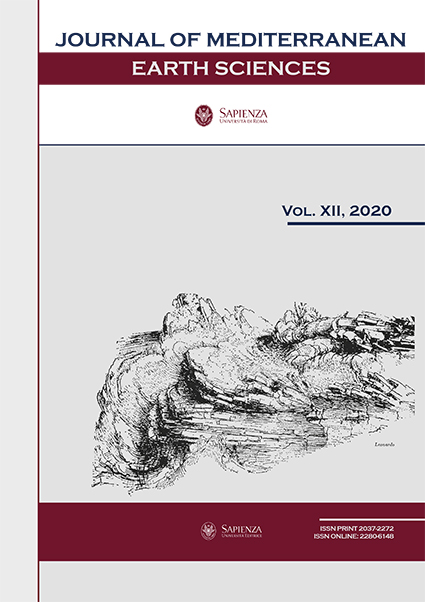The Upper Cretaceous Rudist-bearing facies of the Simbruini Mts. (Central Apennines, Italy): new field data and a review
DOI:
https://doi.org/10.3304/jmes.2020.16748Keywords:
Rudist bivalves, Biostratigraphy, Central Apennines, Cretaceous, Carbonate platformAbstract
The rudist-bearing carbonate platform succession of Marsia, in the northern Simbruini Mts. (Central Apennines), is here described for the first time through the analysis of two stratigraphic sections, and better characterized by the study of three single significant outcrops. Rudist determination and microbiofacies analysis allowed to assess the age of the studied succession and the definition of a biostratigraphic frame. The Marsia composite stratigraphic section encompasses the late Turonian-early/middle Campanian interval, and records the evolution from inner Platform-low hydrodynamic setting in the late Turonian, to an open platform setting characterized by high hydrodynamism in the late Santonian-early/middle Campanian. This succession has been compared with the already described Trevi, S.M. dei Bisognosi and Subiaco carbonate platform stratigraphic successions, and with regional bioevent schemes, in order to consider the evolution of carbonate facies in a wider sedimentological context.
Since the late Turonian, a spreading of rudist facies occurred in the whole central-southern Apennines, representing the first late Cretaceous rudist bioevent. In the Simbruini area inner platform environments, characterized by soft fine-grained sediment are widespread. The successions of Marsia and Trevi, which are marked by upper Turonian inner platform facies with abundant oligospecific radiolitids association with infaunal or semi-infaunal lifestyle, record this bioevent. During the Santonian and the early Campanian a gradual increase in hydrodynamic conditions is testified by by rudist assemblages with hippuritids and robust radiolitids, associated with rare corals and echinoids which mark the second and third late Cretaceous rudist bievent, recorded at Marsia, Trevi and S. M. dei Bisognosi. The middle Campanian-Maastrichtian bioevents, are only represented at S. M. dei Bisognosi and Subiaco where high energy bioclastic facies, dominated by the peculiar radiolitid Sabinia sp. occur.
Downloads
Published
How to Cite
Issue
Section
License
The submission has not been previously published, nor is it before another journal for consideration (or an explanation has been provided in Comments to the Editor).


